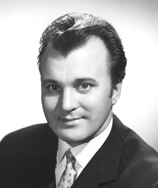SOLON & BEYOND: News from 4-H’ers; RSU #74 students participate in Bikes for Books program
 by Marilyn Rogers-Bull & Percy
by Marilyn Rogers-Bull & Percy
grams29@tds.net
Solon, Maine 04979
Good morning, dear friends. Don’t worry, be happy!
Received the following “Thank You” from the Somerset County 4-H Leaders’ Association, about the Somerset County Annual 4-H Auction: On behalf of all Somerset County 4-H Clubs, we would like to thank you for the great generosity you showed with your donation to our “Luck of the Draw” auction fundraiser.
When you support the 4-H Somerset County Leaders’ Association, you help support these 4-H youth programs: 4-H camperships to Tanglewood, Blueberry Cove, and Bryant Pond; Eastern States Exposition; Citizenship Washington Focus; National 4-H Conference and Congress; 4-H Fun Day @ UMaine Connecting Kids to Campus Weekend at University of Maine; Demonstration Day awards: Achievement Night awards; and the purchase of 4-H curriculum for members projects including new curriculum in Science: : 4-H AgriScience, 4-H Robotics: Engineering, and Entomology.
Our ability to have Somerset County 4-H members participate in these valuable programs would not be possible without the support of local businesses like you.
This spring Solon students are participating in the Bikes for Books program. The Solon Masons are sponsoring this program at the school for the third year.
In this program, students read books and fill out a form on each book they read. In early June there will be an assembly with a drawing from the book forms that have been submitted. A girl and a boy from each class will win a new bike donated by the Masons. We will also award a prize to the student who reads the most books in each class.
Your child’s teacher has book forms for this program. Students are encouraged to read books at school and at home.
RSU #74 will be holding three Career Days for K-5 students in May. Each Career Day will be held at the Garret Schenck School for students from all three elementary schools. Each student will hear three speakers talk about their jobs so that students begin to learn about career options when they’re young.
The Career Days will be May 10 for grades K-1, May 17 for grades 2-3, and May 24 for grades 4-5. The time frame will be 8:30-10:30 a.m., each day. Parents are welcome.
The next Embden Historical Society meeting is scheduled for Monday, May 14, at 7 p.m. The business meeting will be at 6:30 p.m. and the program will be at 7 p.m. Amanda Taylor will be talking about Maine Historic Bridges (including local ones). Refreshments will follow. All are welcome.
The Embden Community Center members will be having their monthly supper, on Saturday, May 12.
The East Madison Historical Association is holding its annual yard and bake sale on June 2 and 3, at 1108 East Madison Road, in Madison. In preparation for this fundraiser, we are looking for donations. If you are interested in donating something to the sale, please contact Gary Malbon at 474-6444 or Eric Lahti at 474-5961 before May 30th. We can arrange for pick up. Thank you. My many thanks to these kind people who keep us informed.
Now for Percy’s Memoir: Faith is Like Magic Glasses: Faith is like a pair of glasses I bring here and there with me, The thrilling thing about them is the wondrous things I see; When life grows dark and dismal and my sight is near decline I don my magic glasses; the perspective soon grows fine. If I slip on this treasure I can toil with greater ease Troubles and afflictions at length begin to please, The world becomes all rosy and as cheery as can be, I surely feel most grateful for the faith God gave to me. Perhaps, you once had glasses, but by faith no longer live. Friend ask God for His pardon, He is kind and will forgive; O cherish this dear tresure till you meet God up above Then present faith as an off’ring with the gifts of hope and love. (words by Sister Mary Gemma Brunke.)


 (NAPSI) — If you or someone you care about is among the 1.6 million Americans with Crohn’s disease or ulcerative colitis, there are a few facts you may find it helpful to know.
(NAPSI) — If you or someone you care about is among the 1.6 million Americans with Crohn’s disease or ulcerative colitis, there are a few facts you may find it helpful to know.





